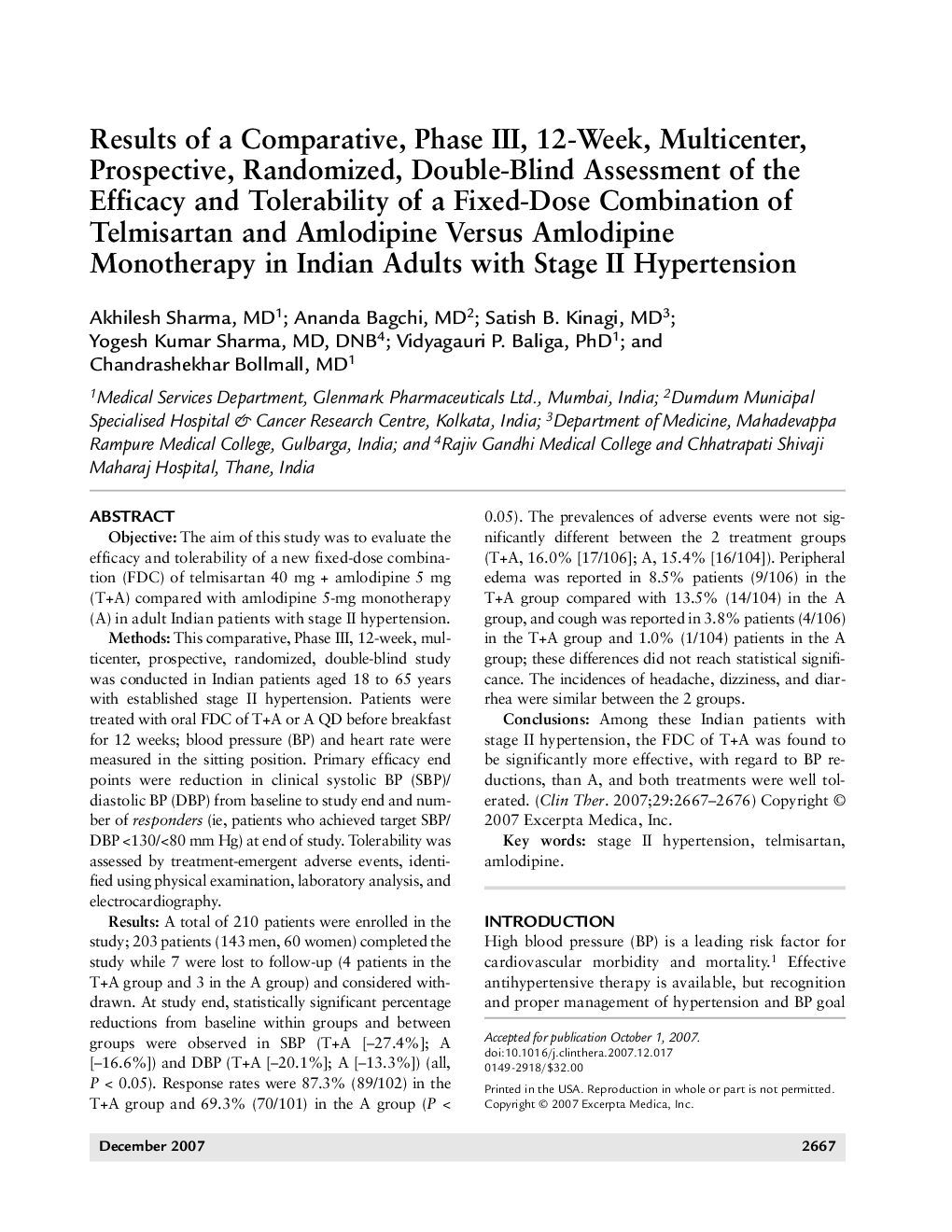| Article ID | Journal | Published Year | Pages | File Type |
|---|---|---|---|---|
| 2529288 | Clinical Therapeutics | 2007 | 10 Pages |
Objective: The aim of this study was to evaluate the efficacy and tolerability of a new fixed-dose combination (FDC) of telmisartan 40 mg + amlodipine 5 mg (T+A) compared with amlodipine 5-mg monotherapy (A) in adult Indian patients with stage II hypertension.Methods: This comparative, Phase III, 12-week, multicenter, prospective, randomized, double-blind study was conducted in Indian patients aged 18 to 65 years with established stage II hypertension. Patients were treated with oral FDC of T+A or A QD before breakfast for 12 weeks; blood pressure (BP) and heart rate were measured in the sitting position. Primary efficacy end points were reduction in clinical systolic BP (SBP)/ diastolic BP (DBP) from baseline to study end and number of responders (ie, patients who achieved target SBP/ DBP <130/<80 mm Hg) at end of study. Tolerability was assessed by treatment-emergent adverse events, identified using physical examination, laboratory analysis, and electrocardiography.Results: A total of 210 patients were enrolled in the study; 203 patients (143 men, 60 women) completed the study while 7 were lost to follow-up (4 patients in the T+A group and 3 in the A group) and considered with-drawn. At study end, statistically significant percentage reductions from baseline within groups and between groups were observed in SBP (T+A [-27.4%]; A [-16.6%]) and DBP (T+A [-20.1%]; A [-13.3%]) (all, P < 0.05). Response rates were 87.3% (89/102) in the T+A group and 69.3% (70/101) in the A group (P < 0.05). The prevalences of adverse events were not significantly different between the 2 treatment groups (T+A, 16.0% [17/106]; A, 15.4% [16/104]). Peripheral edema was reported in 8.5% patients (9/106) in the T+A group compared with 13.5% (14/104) in the A group, and cough was reported in 3.8% patients (4/106) in the T+A group and 1.0% (1/104) patients in the A group; these differences did not reach statistical significance. The incidences of headache, dizziness, and diarrhea were similar between the 2 groups.Conclusions: Among these Indian patients with stage II hypertension, the FDC of T+A was found to be significantly more effective, with regard to BP reductions, than A, and both treatments were well tolerated.
